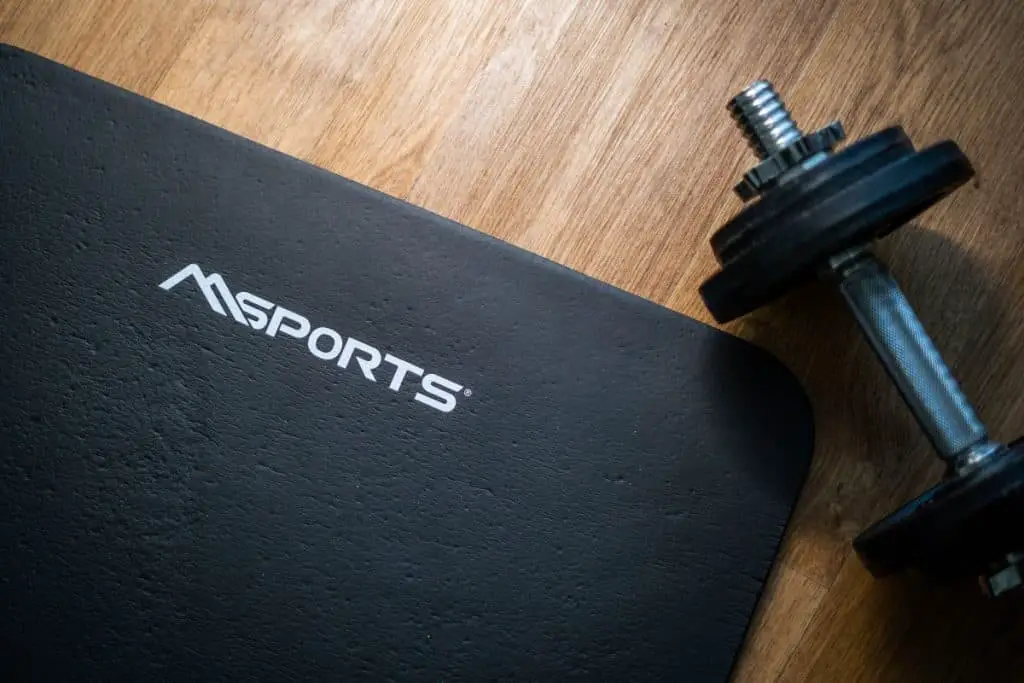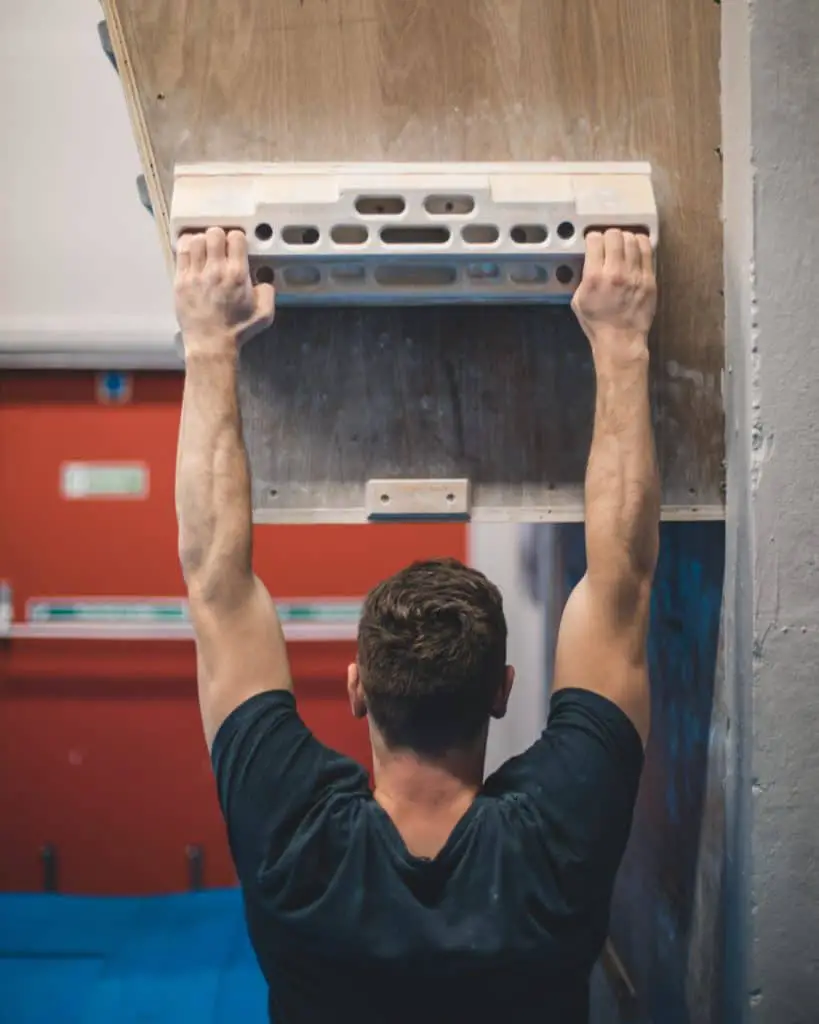
Climbing is my passion and when my regular indoor climbing gym shut I was devastated. All the climbing gyms around me shut at about the same time due to COVID-19 aka coronavirus. For the first few days I was sat at home feeling miserable, but I started to realise that this it’s times like this that separate the strong from the weak. We can either motivate ourselves enough to keep our focus on what truly matters to us or we can give up, feel low and let time take its toll until we can go about our business as usual. I’m not willing to wait so I decided to train climbing at home while including some home workouts to keep my body ready.
So how do you train climbing in lockdown, self-isolation or quarantine? There are four main parts to climbing – diet, physical ability, technique and motivation. It’s best to make a diet plan so that you aren’t going off the rails with sugary, fatty and generally unhealthy foods. It’s also a good idea to commit to a weekly workout routine so you don’t lose your strength or flexibility. Arguably, the hardest attribute to train in lockdown is the technique but this can be done by thinking out of the box – e.g. traversing the walls of your house. When it comes to motivation I find that actually having a set time AND a set space in your home to do your workouts and/or climbing exercises really helps. It also helps if you can do the workouts with someone else over video call so you can motivate each other.
Page Jumps
- Climbing in Lockdown: Stick to a Diet Plan
- Climbing in Lockdown: Stick to a Workout Routine
- Climbing in Lockdown: Find a Way to Climb
- How to Stay Motivated in Lockdown
- Use Quarantine as a Time to Heal Your Injuries
- Related Questions
Climbing in Lockdown: Stick to a Diet Plan
Sticking to a diet plan is crucial in quarantine. This isn’t just because you want to keep yourself fit when the lockdown finally ends and you can start climbing again. It’s mainly because the average man or woman will find themselves bored at home and start raiding their cupboards and/or fridge. Most people snack when they’re bored and that’s a dangerous habit to get into. I wouldn’t advise you start a habit like this because you’ll want to continue it once you’re no longer isolated. Therefore I would advise you to stick to a diet plan. Not only will you feel better for doing this, you’ll also help your climbing.
One thing I do know is everyone’s diet is different these days. Some people are wheat intolerant, some people are vegan, and some people can’t eat carbs. I’m not going to supply you with a diet plan here because it’s impossible for me to please everyone. However, what I can tell you is that you need to limit your snacks and alcohol per day if it isn’t the norm and also only buy food from the supermarket that you should be eating. If I don’t have chocolate in the cupboards that means I’m going to have to go to the store to buy it (and with the queues at the moment I’d rather not).
Climbing in Lockdown: Stick to a Workout Routine
Home workouts are very popular these days, but for climbing I would advise you only workout specific areas that are going to keep you strong. If you add more weight to your body that isn’t actually going to help your climbing then it might actually make your climbing experience worse! The perfect climber is light in weight but strong. A lot of people also forget about the importance on training flexibility for climbing, but don’t worry I’ve got you covered in this section.
Strength Training for Climbing
- Pull ups. First of all I would consider buying a pull-up bar (click for link to product) to keep your back and shoulder muscles strong. Pull-up bars are also great to keep your shoulders loose by using them to hang on (click for article). If you can’t do normal pull-ups, try putting a chair underneath and putting a foot on it when pulling yourself up.
- Push-ups are a great way to work your chest, shoulders and triceps all at once. There’s all sorts of different types of push-ups you can do to focus on different parts of your chest.
- Bicep curls. If you have dumbbells it’s time to work those biceps with some bicep curls. These are straight forward.
- Core workouts will keep you ready for those overhangs. Sit-ups, crunches, leg raises and planks are ideal. Try 20 sit-ups, 10 crunches, 10 leg raises and 20 seconds plank every night to keep that core in shape (1 rest day every 5 days).
- Hangboard training. If you have a hangboard (aka fingerboard) then this is obviously an ideal way to train your finger strength. For a detailed overview of hangboard training check out this article I wrote. Finger strength is crucial for a climber.

- Wrist curls. Training your forearms is also a good idea, so if you have dumbbells (if not get a tin a beans) you can do some wrist curls. Sit in a chair and put your forearms on your legs palms facing to the ceiling. Curl the dumbbell towards you and release. Repeat this until you feel the burn.
- Squats and calf raises. Train your legs by squatting and doing calf raises. Calf raises are best done on a yoga block or a stair – put the front half on your foot on the yoga block, stand on your tip toes and then lower your heels back down below the yoga block. Repeat this until you feel the burn. If you need to add more weight to the squats or calf raises just put a dumbbell in each hand while you do the exercises.
Flexibility Training for Climbing
- Upper back. There are a few different stretches for the upper back (including the neck and shoulders) that I really find helpful. Climbing puts a toll on our upper back area because of all the pulling we do with our shoulders and lats. We want to minimize injury as much as possible and stretching daily is the way to do that. Check out this video from Yoga with Adriene for a rundown of the upper back stretches I do daily which I believe have improved my life dramatically.
- Lower back. There’s one lower back stretch that I absolutely love and incorporate into my daily routine. Not only does it help any lower back pain (or future injury), it also stretches your calves. Go to a wall, put your back on the floor, bum to the wall and put the back of your legs against the wall. Now flex your toes towards your head. You should be in an L shape position, feeling a stretch in your calves. This position aligns your legs with your hips and lower back. It’s great.
- Legs. As climbers, we need flexibility in our legs more than you might think. We’ve already stretched our calves when we did our lower back stretch. Now it’s time to open up your hip flexors. Check out this video by Doctor Jo:
Climbing in Lockdown: Find a Way to Climb
Now there’s one thing which you’ll probably find overall the hardest part of training from home and that’s actually finding a way to climb. However, there are lots of ways you can train climbing at home that you may never have thought of. For example, you can climb around your dining room table! You can even traverse from one side of your house to another. The climbing gym I usually attend is actually having a competition at the moment on Instagram where their followers are tagging them in videos of themselves climbing at home. I think it’s a genius idea and it also helps you with your technique while you can’t go to a crag or a gym.
Now some people might be wondering if they are actually allowed to go climbing outside in their country. I’ve actually written a short article about that which you can find here. Personally I’m not going to risk climbing on my own in these unusual times, but that’s just my opinion.
How to Stay Motivated in Lockdown
When lockdown in my country was first announced I said to my partner that this is going to separate the strong minded from the weak minded. The strong will come through these weeks having bettered themselves in many different areas, and the weak will just be complaining or watching TV all day. I’ve found the best way to motivate myself is to set myself a daily routine. I have a child who’s no longer at nursery through the lockdown, so the night before I make a list of things to do with him until bed time. After that it’s time to progress in different areas of my life such as climbing. To stay motivated you need to set yourself goals which revolve around a daily routine. I’ve also found that having my partner set herself exercise goals (and other goals) means that we motivate each other. If you live on your own see if you can set a certain time through the day that you and a friend can video call each other to complete the exercises you’ve set yourself daily.
Use Quarantine as a Time to Heal Injuries
It’s best to use the time that lockdown is giving us in a positive way. If you have any injuries that you were training on, or old ones that you’d like to heal, it might be good for you to find some rehabilitation techniques online. If you’re going to do the exercises outlined in this video, be sure to make sure you work around your injuries.
Related Questions
Can I go rock climbing in lockdown? That depends on your country. Check out this article I’ve written here to see if I’ve mentioned your country.
